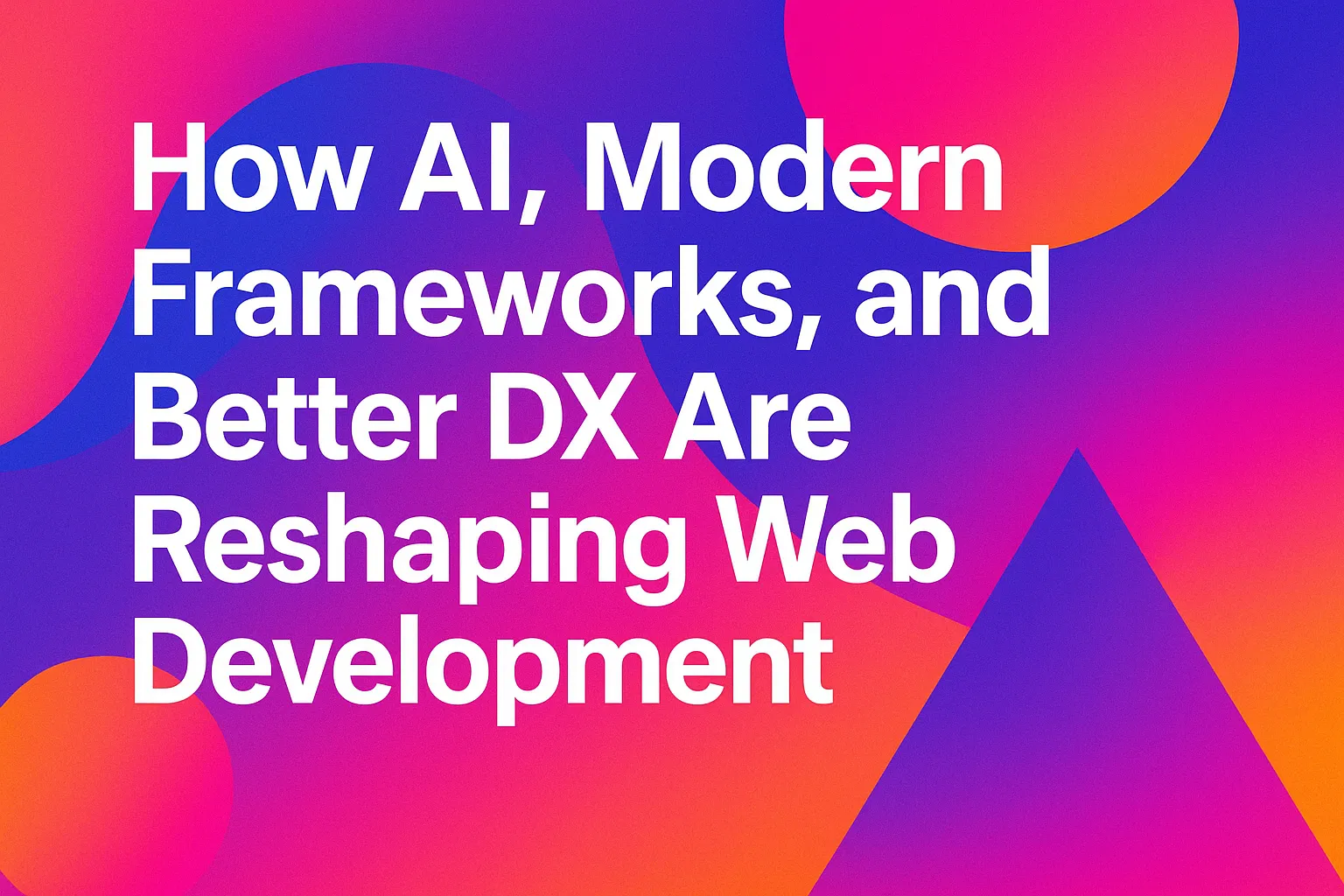In the humming fluorescent light of a downtown co-working space, Maya leans back in her swivel chair, eyes fixed on a wall of code. Beside her, GitHub Copilot suggests a function—before she’s even finished typing the comment. She blinks. “That was… fast,” she murmurs. A few desks over, her teammate laughs at a Slack bot that just autocompleted a unit test. Welcome to today’s web development landscape, where AI, cutting-edge frameworks, and an obsession with developer experience (DX) are rewriting the rules.

The clack of mechanical keyboards once signified deep focus. Now it’s punctuated by the soft ping of AI suggestions. You might wonder: is this magic? In a way, yes—and no. Tools like Copilot and ChatGPT are astonishingly helpful, but they’re not perfect. They’ll hallucinate variable names or recommend suboptimal patterns. Still, in Maya’s hands, they shave hours off rote work.
On the other hand, this isn’t about replacing humans with robots. It’s about raising the baseline. With AI handling boilerplate, developers can spend more time architecting systems—and less time wrestling with semicolons. That said, I’ve noticed something surprising: teams that adopt AI tools too hastily often hit friction. They don’t invest in code reviews or standards, assuming the AI “knows best.” Spoiler alert: it doesn’t.
Beyond the Hype: What Modern Frameworks Really Offer
Beyond AI, new frameworks are stealing the spotlight. Remember when React’s virtual DOM was revolutionary? Now Svelte compiles away the framework itself, delivering leaner runtime bundles. Developers switching to Svelte report noticeably snappier load times—especially on mobile. And then there’s Astro, which treats JavaScript like garnish, shipping almost nothing by default. Yes, Virginia, you can build a blog without a heavy JS payload.
I’ll admit, when I first heard about micro-frontends, I rolled my eyes. “Another buzzword,” I thought. But after dismantling a monolith into independently deployable widgets, I realized how much smoother cross-team collaboration becomes. No more stepping on each other’s toes when one feature update accidentally breaks another.

Of course, all this tech swagger means little if the developer journey is a slog. Which brings us to DX—developer experience. Imagine onboarding onto a legacy repo where every environment variable is a mystery. Nightmarish, right? Contrast that with projects bootstrapped by Vite or Next.js, where you clone, run a single command, and voilà—local server up and running. That frictionless onboarding is no accident; it’s a strategic investment.
I once joined a project so poorly documented, I spent two days chasing environment errors before writing a single line of real code. By comparison, on my current team, luxurious readme files and Docker-powered dev environments feel like a spa treatment. Not all pampering is frivolous; good DX translates into faster feature delivery and less burnout.
Yet here’s a hiccup: senior engineers sometimes scoff at DX investments (“Docs? Really?”). If you’ve ever muttered that, fear not—you’re not alone. But trust me, good documentation and automated setup scripts free up cognitive bandwidth. You end up spending more time solving puzzles you care about, rather than fixing missing dependencies.
A New Stack for a New Mindset
That said, no conversation about modern web dev is complete without a nod to architecture. Serverless functions, Jamstack sites, GraphQL… pick your buzzword buffet. These patterns aren’t just trendy; they reflect a shift to API-first, componentized design. Apps are no longer monoliths but ecosystems of microservices and modular frontends, glued together by clean contracts.
You might wonder: does this complexity pay off? In large-scale applications, absolutely. Teams can iterate independently. Security updates become surgical patches. And performance? It’s often off the charts—static pages served from CDNs, dynamic bits isolated in microservices.
So what’s the takeaway? As I glance back at Maya, still marveling at her AI assistant’s suggestion, I see a microcosm of the industry’s evolution. We’re living in an era where developers can—no, must—embrace intelligent tooling, experiment with lighter, faster frameworks, and champion friction-free DX. Imperfections in AI code or occasional framework quirks are part of the adventure. They keep us on our toes, skeptical and curious.
Finally, let’s return to our co-working scene. Maya runs her tests, nods, and hits deploy. The site goes live—faster than it ever did a few years ago. And somewhere behind the scenes, an AI quietly learns from her edits, ready for the next sprint. Isn’t that something worth reflecting on? In this whirlwind of progress, the smartest engineers won’t be those who resist change, but those who humanize it—balancing shiny new toys with the wisdom of hard-earned experience.
In the end, it all comes back to that swivel-chair moment: a developer and her AI, crafting the future of the web, one keystroke at a time.

Leave a Reply